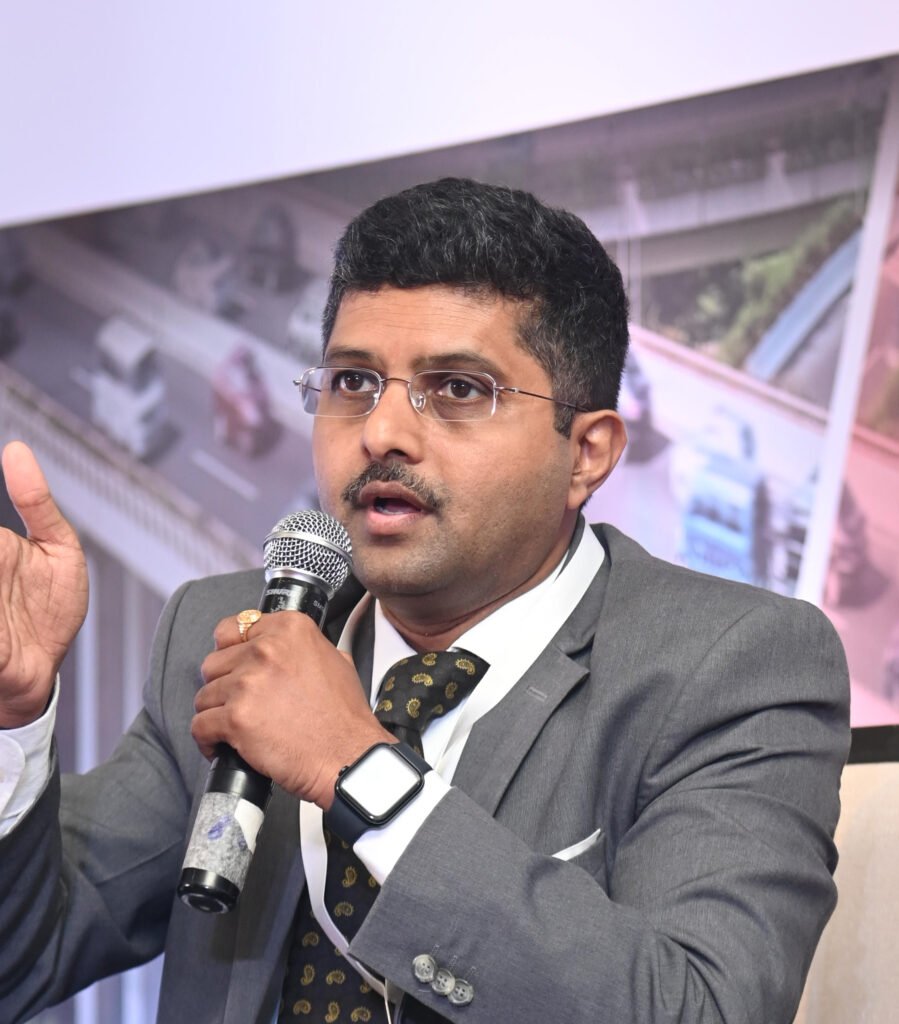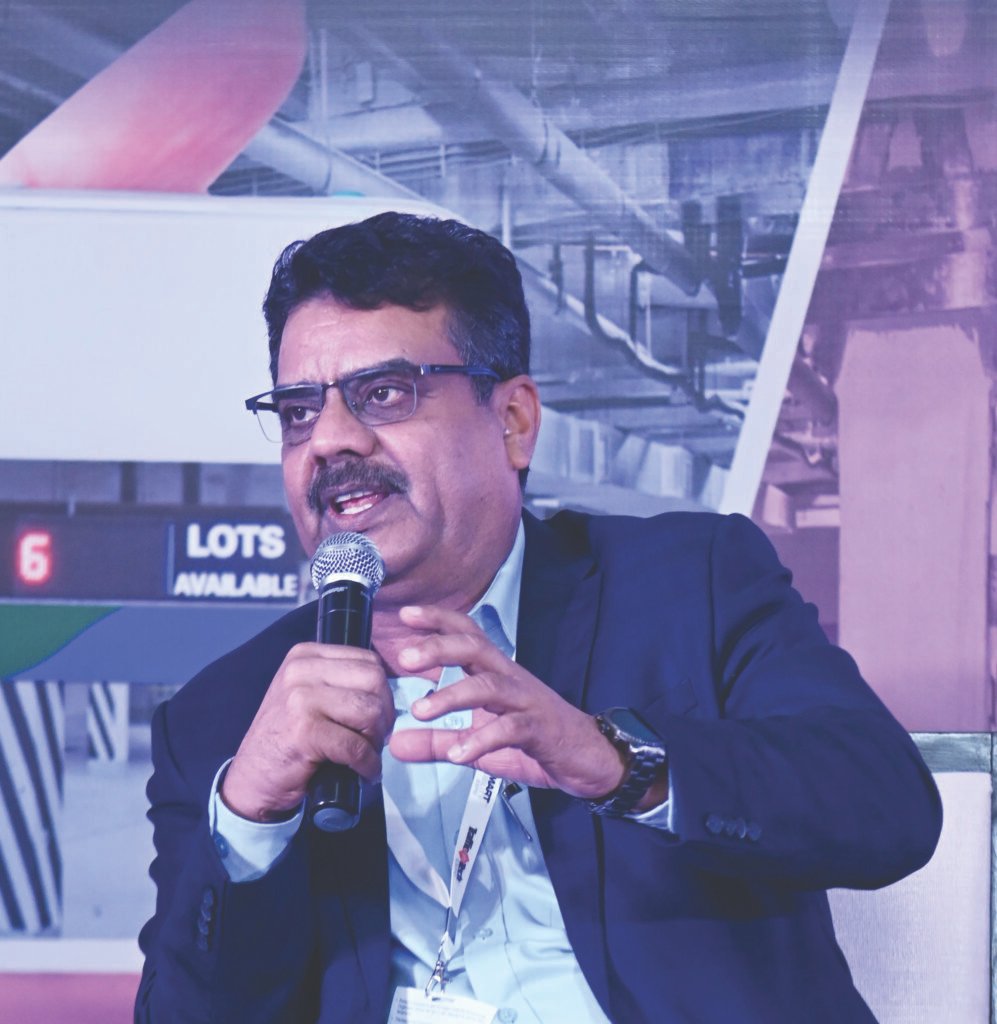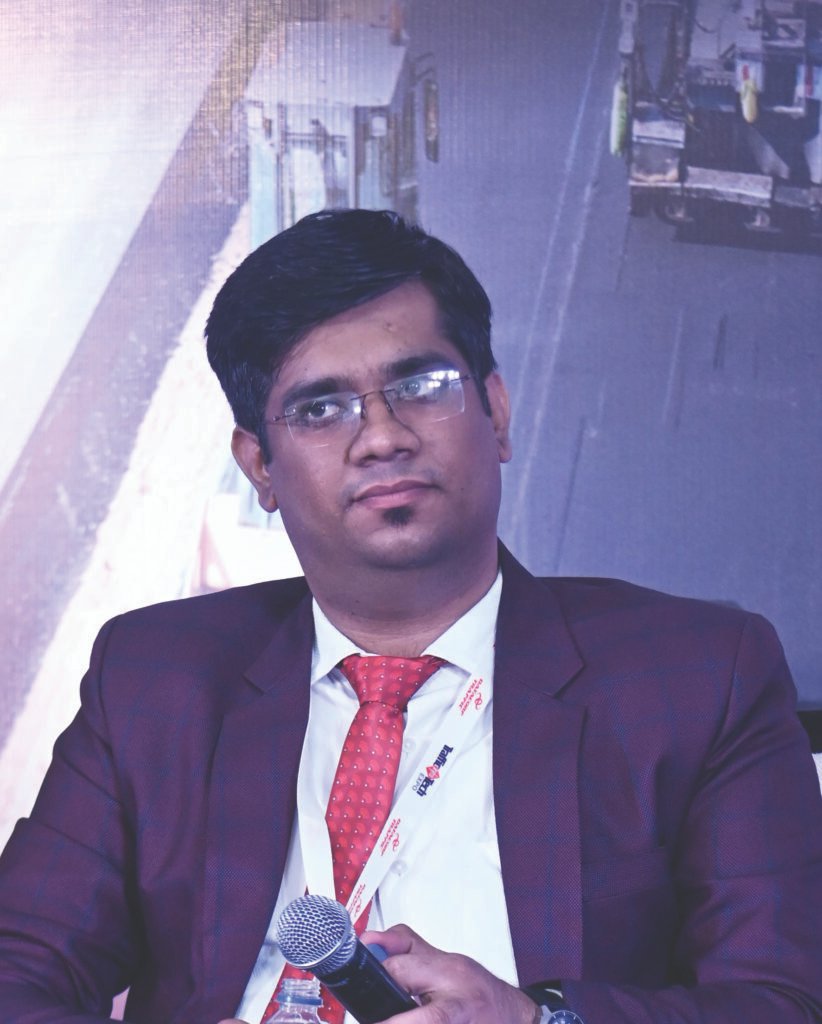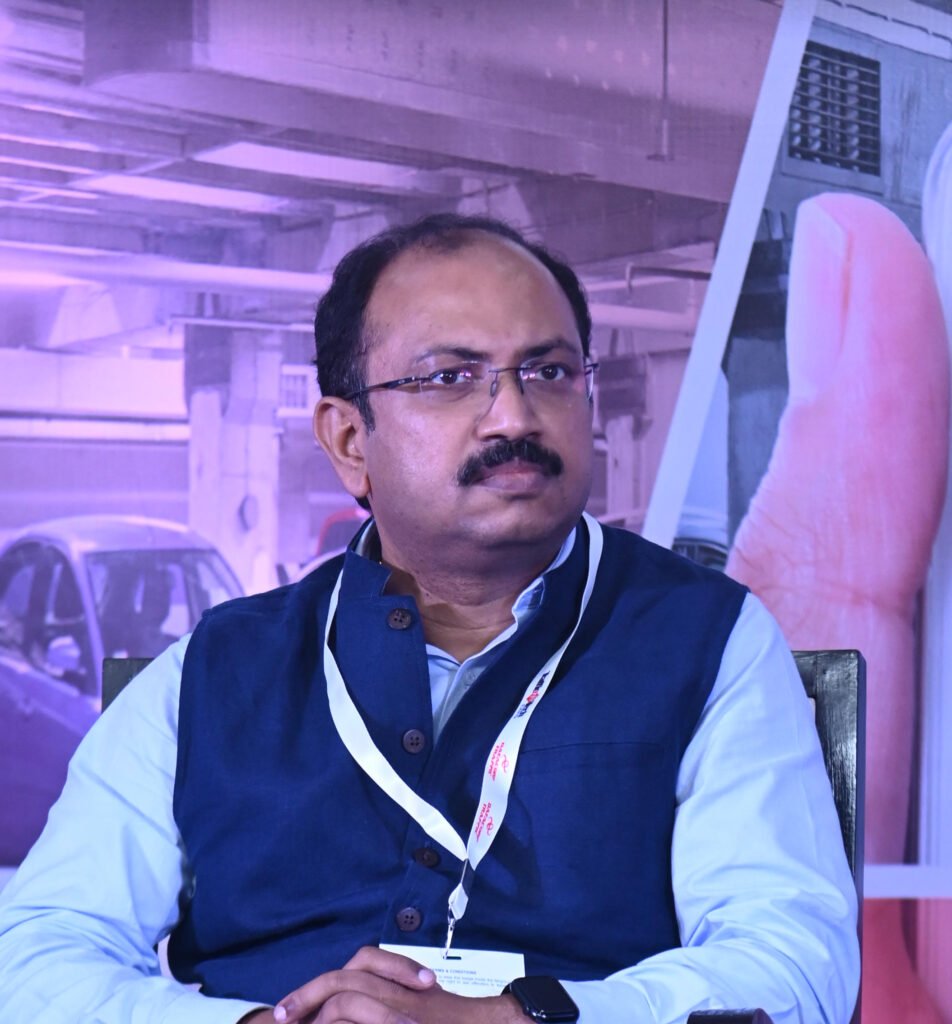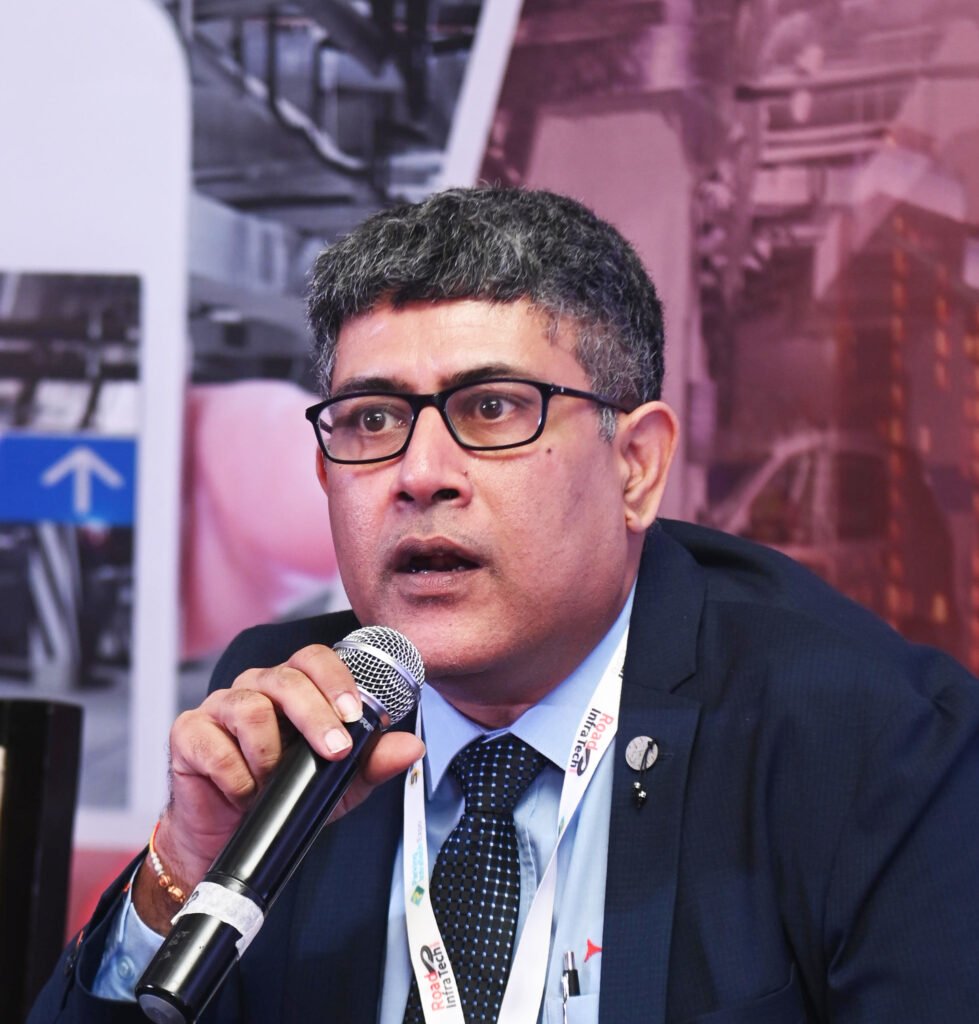The management of traffic in India has long been a challenging task due to its densely populated cities, diverse traffic conditions, and road infrastructure. However, as the world embraces technological advancements, India is no exception in adopting innovative solutions to address these challenges. At the session on “Emerging Technologies for Traffic Management”, as part of the Smart Mobility Conference 2023, the Panellists Ramakrishna JVS, Global BU Head – Sustainable Smart World, L&T Technology Services, Venkata Subbarao Chunduru, Director – India, ARCADIS (who steered the discussion), Rajiv Arora, National Vertical Manager, Prama Hikvision India Pvt. Ltd., M A Johar, President – Strategic Business Division, CP PLUS and Prashant Oberoi, Director Sales – Govt. Business INDIA & SAARC Region, Norden Communication Private Limited explored how technology is playing a pivotal role in transforming traffic management in India.
In urban areas, the root cause of accidents is poor road conditions and not speeding. Potholes get generated at new places every time so the hotspots of accidents keep moving from one place to another
Ramakrishna JVS
L&T Technology Services
Technology-Driven Solutions: A technology-focused approach is revolutionizing traffic management in India, shifting from device-based to Technology-Driven Solutions: A technology-focused approach is transparency into traffic operations. These cameras serve various purposes, such as Automatic Number Plate Recognition (ANPR), surveillance, and monitoring speeding. This approach raises questions about the multi-functionality of these technologies.
The industry is fully prepared to meet increased requirements on the hardware and video analytics front as consolidations on infra equipment and components with technology partners are not an issue, being as they are fully Onwave compliant. In the coming 2-3 years, India would have fully owned security surveillance camera infrastructure along with owned chips, or co-produced chips or chip designed or packaged in the country.
M A Johar
CP PLUS
Enforcement and Monitoring: Technology’s role in enhancing road safety is paramount. Accidents often result from poor road conditions rather than just speeding. The successful implementation of a comprehensive traffic management system in Hyderabad is a notable example. It covers 200 key junctions using enforcement cameras, videos and deep vision analytics to identify various traffic violations, such as red-light running, speeding, triple riding, non-usage of helmets, and even pothole detection. Thus, technology is not just about enforcement but also about monitoring road conditions.
While technologies like multi-lane ANPR cameras, multi-lane radars, electronic monitoring devices and video incident and detection system (VIDS) are available, government agencies need to put them to use and avail of the solutions provided to manage traffic and improve safety
Rajiv Arora
Prama Hikvision India Pvt. Ltd
Solution-Based Approach: Addressing the alarming number of road fatalities in India is essential. Speeding is a significant contributor to road accidents, and the proposal is to use technologies like multi-lane ANPR cameras, radars, electronic monitoring devices and video incident detection systems. These technologies should be deployed on highways and urban roads to enhance traffic management and safety. MoRTH had published guidelines on maintenance of all electronic monitoring devices at the state level. It was suggested that every state maintain mobile surveillance solutions like body worn cameras and dash board cameras for drivers.
Technology is not the end but a means to the end. Placing a camera helps you see, but what you do after you see is what is important.
V S Chunduru, ARCADIS
Transparency in Operations and Safety: The selection of the right cameras for video analytics is crucial, not only for traffic management but also for evidence collection. The correct cameras can capture events in detail, aiding in quick investigations. There is also an expansion in camera production to meet the growing demand, with the potential for exports, aligning with the “Make in India” initiative.
Multi-Purpose Cameras: Embedding multiple functionalities into a single camera is a promising approach to reduce infrastructure requirements and operational costs. This transforms cameras into an “Internet of Things” (IoT) device by integrating sensors, software, and networking capabilities. This approach reduces the number of external cameras and simplifies infrastructure and maintenance.
While production capacity is not an issue, three challenges, namely, reduced lead times related to chip availability, clear and continuously updated guidelines for technology vendors and promoting innovation by encouraging R&D, need to be addressed.
P Oberoi
Norden Communication Private Limited
Digital Public Goods and Infrastructure: The discussion raised the issue of digital public goods and public infrastructure in traffic management, highlighting the vast market in India and encouraging plans to scale up manufacturing capacity and skills to meet the increasing demand.
Track and trace solutions and fast response times are crucial in traffic management. With the creation of a unified network, the ability to track and respond effectively becomes paramount. Technologies like C-V2X and 5G networks are essential to ensure swift responses to incidents.
Capacity Building and Future Requirements: The readiness to meet future demands was emphasized, with discussions of capacity building, manufacturing facilities, and support centers in place to cater to the increasing requirements. Collaboration with technology partners and chip manufacturers to ensure the availability of necessary components was also discussed.
The panelists acknowledged some challenges, including lead times for chip availability, outdated standards, and a shift from quality-based selection to cost-based selection in tenders. There is a need for clear guidelines for technology vendors and a focus on promoting innovation to ensure the development and adoption of cutting-edge solutions. The companies are ready with increased production capacity and technologies to meet future requirements.
Technology is driving a significant transformation in traffic management in India, with experts and industry leaders actively exploring innovative solutions to address long-standing challenges. As India continues to invest in technology-driven traffic management, we can anticipate safer roads, efficient operations, and a brighter future for transportation in the country.
 TrafficInfraTech Magazine Linking People Places & Progress
TrafficInfraTech Magazine Linking People Places & Progress
